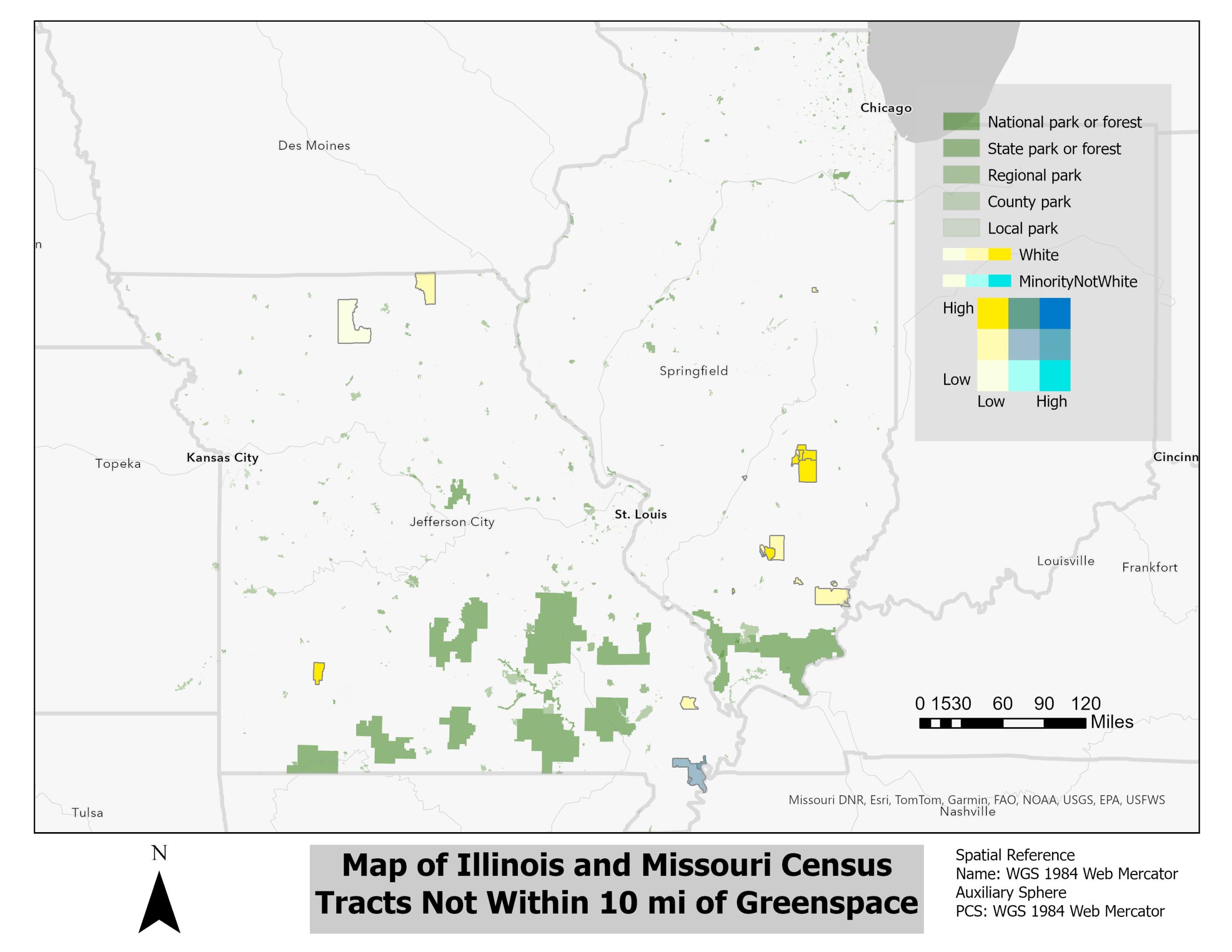Geographic Focus
_________________________________________________________________
Our understanding of greenspace, environmental conservation, and environmental injustices would have never been possible without having the opportunity to work with and learn from the National Great Rivers Research and Education Center and the city of Alton, Illinois. According to the USDA, the burden of climate change is inequitably placed on the backs of communities of color. These communities often lack access to climate change knowledge and the resources to protect their communities from these changes. Therefore when drastic changes are seen such as floods, heatwaves, or other natural disasters these communities are hit harder and often struggle to rebuild.
This can be seen clearly in the city of Alton when the floods hit in 2019 and every time before that, this burden was not felt by all residents equally. Instead, the black community that resided in the low-lying areas was left to suffer and struggle to repair their homes. Without proper funding or education cities like Alton often see their communities of color fall into disrepair and fall victim to a cycle of rumors and inequities leading to their demonization.
This problem is in no way central to Alton, throughout the history of this country the United States government has been complacent and willing in the sedation of the African American race. This can be seen through the history of cities like East St Louis, Alton, Rockford, Chicago, Oakland, and Detroit just to name a few.
As a group, we believe the only way to fix this is through continued discussion and education because education is power. With this power we can rebuild and strengthen communities of color and from there a new horizon can come into view, a Green Horizon.
What is Greenspace?
______________________________________
Greenspaces are areas primarily covered in vegetation that can be public or private. These spaces can include farms, playgrounds, sports recreational areas, greenways, cemeteries, and more. For this project, I am primarily focusing on public greenspaces including parks, playgrounds, and nature preserves.
This space can be essential to community development. Greenspace has been theorized to improve mental health, crime rates, and mortality rates in communities. However, all of these benefits can only happen when communities have adequate access to these spaces, something disproportionately lacking in communities of color.

Why Map Greenspace?
_________________________________________________________________
I chose maps because they are often seen as a figure of authority when discussing issues related to geography or its topics. By utilizing maps you are not only able to portray your information using visuals that may portray it more accurately than words but you are also able to make your presentations more accessible to a broad audience.
The Maps
_________________________________________________________________









The Future of These Maps
Ideally, I’d love it if the work I started with these maps could be shared and continue through my own work and the work of others alike. Currently, I plan on sharing this work both through the main dissemination plan for this project and through my ventures. In March of 2025, I plan on attending the American Association of Geographers Annual Meeting in Detroit Michigan. There I hope to share the work I have done thus far and consult with other geographers about how to not only improve my current maps but also how to best spread them to a wider audience.

